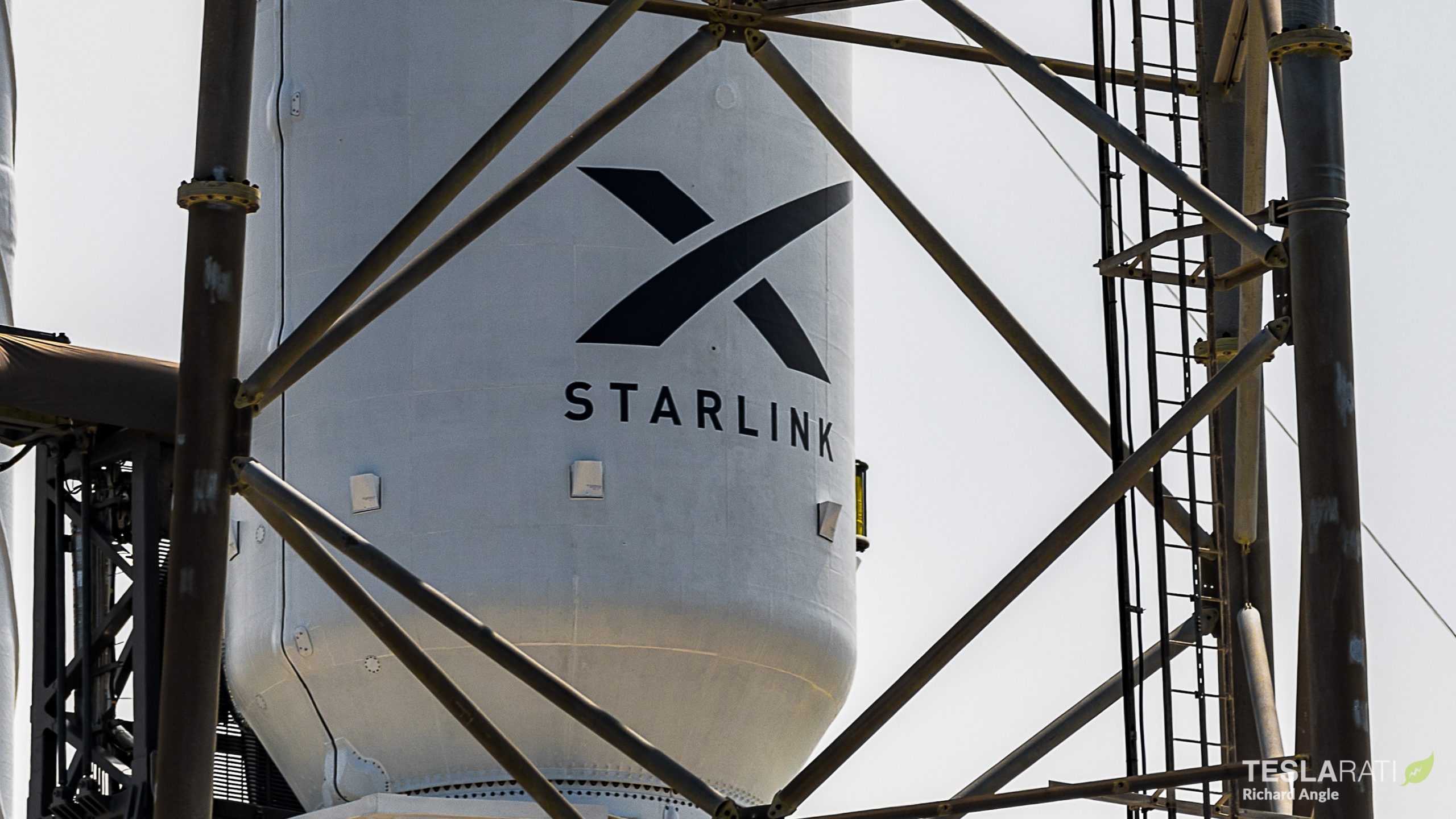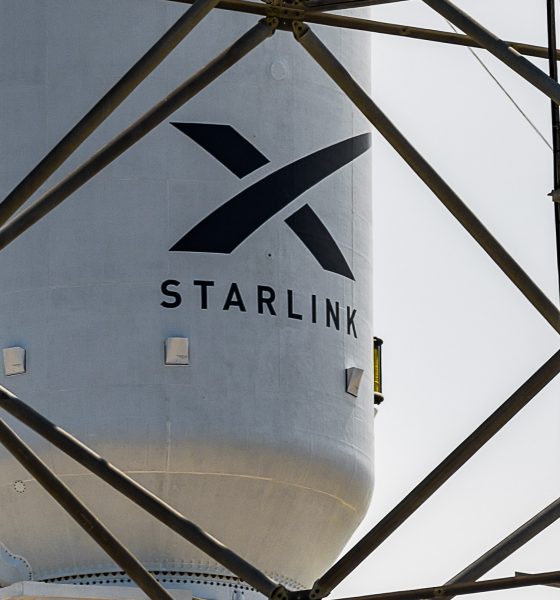

News
SpaceX plans to launch Falcon 9 from both the East and West coasts hours apart
SpaceX plans to launch two Falcon 9 rockets hours apart from Florida and California. Starlink group 6-3 will launch from Cape Canaveral Space Force Station with a planned launch time of 12:41 AM ET (04:41 UTC) and from Vandenberg Space Force Base, Iridium OneWeb rideshare launch at 6:19 AM PT (13:19 UTC).
First up, SpaceX will launch booster 1076 on its 5th flight to deliver 22 Starlink V2 mini-satellites to a 43 degree orbit inclination. The 22 Starlink V2 mini-satellites come in at a combined ~17.6 metric tons, potentially setting the record for the most mass to low Earth orbit for a Falcon 9. This shows a gradual increase in the confidence of the Falcon 9 to deliver high-mass payloads to orbit while maintaining the ability to recover the first stage. On station for this recovery is the droneship “A Shortfall of Gravitas,” stationed roughly 636 km downrange, just East of the Bahamas.
The current weather outlook for this launch has a 60% chance of violating launch criteria at the opening of the launch window. However, this launch has three more opportunities, 1:13 AM ET (05:31 UTC), 2:19 AM ET (06:19 UTC), and 3:09 AM ET (07:09 UTC) in which the weather improves to a 40% chance of violating launch criteria.
Targeting Friday, May 19 for Falcon 9’s launch of 22 second-generation @Starlink satellites to low-Earth orbit from SLC-40 in Florida → https://t.co/bJFjLCiTbK pic.twitter.com/dauhzxh0z5
— SpaceX (@SpaceX) May 18, 2023
Rounding out the Friday launches is the Iridium OneWeb rideshare launch from Vandenberg Space Force Base. This will feature the launch of 5 Iridium satellites and 16 OneWeb satellites. The 5 Iridium satellites launching on this mission are essentially spare satellites but will help bolster their on-orbit capabilities in the case of another satellite having technical issues. Once inserted into their initial orbits and passing testing, the satellites will then be drifted to their final orbits. The 16 OneWeb satellites will feature 15 Gen-1 satellites and 1 prototype Gen-2 satellite, nicknamed ‘JoeySat’, intended to test highspeed internet. This Gen-2 satellite is a partnership between OneWeb and the European Space Agency. The technology being tested on this satellite will give the ability for OneWeb to quickly adjust to surge demand and also rapidly deploy 5G mini hubs in the case of natural disasters to help with recovery efforts.
No. It’s not like a satellite giant Jenga…(though that would be kinda cool ?)
?️ ?️ ?️
?️ ?️ ?️
?️ ?️ ?️Check out the stacked dispenser of 5 #Iridium9 satellites (top) and a whole bunch of @OneWeb satellites, getting ready to roll for our upcoming @SpaceX rideshare ? pic.twitter.com/9r9lrbCRBh
— Iridium (@IridiumComm) May 16, 2023
The Falcon 9 launching this rideshare is booster 1063 on its 11th mission. Following stage separation, the booster will land the droneship ‘Of Course I Still Love You’. If, for some reason, launch does not happen on time, SpaceX has a backup opportunity Saturday, May 20th at 6:15 AM ET (13:15 UTC). Watch the Starlink and Iridium OneWeb launches below!
Questions or comments? Shoot me an email @ rangle1555@gmail.com, or Tweet me @RDAnglePhoto.

News
Tesla starts showing how FSD will change lives in Europe
Local officials tested the system on narrow country roads and were impressed by FSD’s smooth, human-like driving, with some calling the service a game-changer for everyday life in areas that are far from urban centers.

Tesla has launched Europe’s first public shuttle service using Full Self-Driving (Supervised) in the rural Eifelkreis Bitburg-Prüm region of Germany, demonstrating how the technology can restore independence and mobility for people who struggle with limited transport options.
Local officials tested the system on narrow country roads and were impressed by FSD’s smooth, human-like driving, with some calling the service a game-changer for everyday life in areas that are far from urban centers.
Officials see real impact on rural residents
Arzfeld Mayor Johannes Kuhl and District Administrator Andreas Kruppert personally tested the Tesla shuttle service. This allowed them to see just how well FSD navigated winding lanes and rural roads confidently. Kruppert said, “Autonomous driving sounds like science fiction to many, but we simply see here that it works totally well in rural regions too.” Kuhl, for his part, also noted that FSD “feels like a very experienced driver.”
The pilot complements the area’s “Citizen Bus” program, which provides on-demand rides for elderly residents who can no longer drive themselves. Tesla Europe shared a video of a demonstration of the service, highlighting how FSD gives people their freedom back, even in places where public transport is not as prevalent.
What the Ministry for Economic Affairs and Transport says
Rhineland-Palatinate’s Minister Daniela Schmitt supported the project, praising the collaboration that made this “first of its kind in Europe” possible. As per the ministry, the rural rollout for the service shows FSD’s potential beyond major cities, and it delivers tangible benefits like grocery runs, doctor visits, and social connections for isolated residents.
“Reliable and flexible mobility is especially vital in rural areas. With the launch of a shuttle service using self-driving vehicles (FSD supervised) by Tesla in the Eifelkreis Bitburg-Prüm, an innovative pilot project is now getting underway that complements local community bus services. It is the first project of its kind in Europe.
“The result is a real gain for rural mobility: greater accessibility, more flexibility and tangible benefits for everyday life. A strong signal for innovation, cooperation and future-oriented mobility beyond urban centers,” the ministry wrote in a LinkedIn post.
News
Tesla China quietly posts Robotaxi-related job listing
Tesla China is currently seeking a Low Voltage Electrical Engineer to work on circuit board design for the company’s autonomous vehicles.

Tesla has posted a new job listing in Shanghai explicitly tied to its Robotaxi program, fueling speculation that the company is preparing to launch its dedicated autonomous ride-hailing service in China.
As noted in the listing, Tesla China is currently seeking a Low Voltage Electrical Engineer to work on circuit board design for the company’s autonomous vehicles.
Robotaxi-specific role
The listing, which was shared on social media platform X by industry watcher @tslaming, suggested that Tesla China is looking to fill the role urgently. The job listing itself specifically mentions that the person hired for the role will be working on the Low Voltage Hardware team, which would design the circuit boards that would serve as the nervous system of the Robotaxi.
Key tasks for the role, as indicated in the job listing, include collaboration with PCB layout, firmware, mechanical, program management, and validation teams, among other responsibilities. The role is based in Shanghai.
China Robotaxi launch
China represents a massive potential market for robotaxis, with its dense urban centers and supportive policies in select cities. Tesla has limited permission to roll out FSD in the country, though despite this, its vehicles have been hailed as among the best in the market when it comes to autonomous features. So far, at least, it appears that China supports Tesla’s FSD and Robotaxi rollout.
This was hinted at in November, when Tesla brought the Cybercab to the 8th China International Import Expo (CIIE) in Shanghai, marking the first time that the autonomous two-seater was brought to the Asia-Pacific region. The vehicle, despite not having a release date in China, received a significant amount of interest among the event’s attendees.
Elon Musk
Elon Musk and Tesla AI Director share insights after empty driver seat Robotaxi rides
The executives’ unoccupied tests hint at the rapid progress of Tesla’s unsupervised Robotaxi efforts.

Tesla CEO Elon Musk and AI Director Ashok Elluswamy celebrated Christmas Eve by sharing personal experiences with Robotaxi vehicles that had no safety monitor or occupant in the driver’s seat. Musk described the system’s “perfect driving” around Austin, while Elluswamy posted video from the back seat, calling it “an amazing experience.”
The executives’ unoccupied tests hint at the rapid progress of Tesla’s unsupervised Robotaxi efforts.
Elon and Ashok’s firsthand Robotaxi insights
Prior to Musk and the Tesla AI Director’s posts, sightings of unmanned Teslas navigating public roads were widely shared on social media. One such vehicle was spotted in Austin, Texas, which Elon Musk acknowleged by stating that “Testing is underway with no occupants in the car.”
Based on his Christmas Eve post, Musk seemed to have tested an unmanned Tesla himself. “A Tesla with no safety monitor in the car and me sitting in the passenger seat took me all around Austin on Sunday with perfect driving,” Musk wrote in his post.
Elluswamy responded with a 2-minute video showing himself in the rear of an unmanned Tesla. The video featured the vehicle’s empty front seats, as well as its smooth handling through real-world traffic. He captioned his video with the words, “It’s an amazing experience!”
Towards Unsupervised operations
During an xAI Hackathon earlier this month, Elon Musk mentioned that Tesla owed be removing Safety Monitors from its Robotaxis in Austin in just three weeks. “Unsupervised is pretty much solved at this point. So there will be Tesla Robotaxis operating in Austin with no one in them. Not even anyone in the passenger seat in about three weeks,” he said. Musk echoed similar estimates at the 2025 Annual Shareholder Meeting and the Q3 2025 earnings call.
Considering the insights that were posted Musk and Elluswamy, it does appear that Tesla is working hard towards operating its Robotaxis with no safety monitors. This is quite impressive considering that the service was launched just earlier this year.








